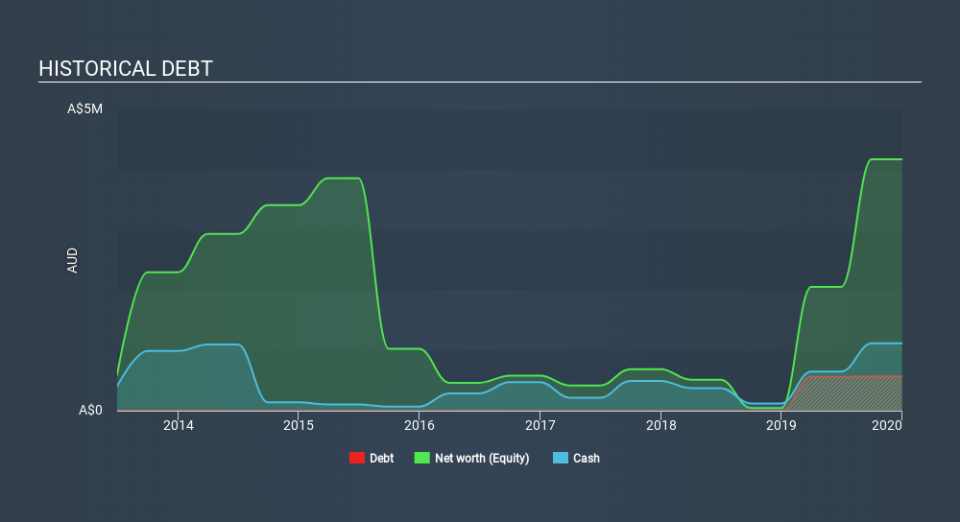If You Had Bought Dreadnought Resources (ASX:DRE) Stock Five Years Ago, You'd Be Sitting On A 90% Loss, Today

Long term investing works well, but it doesn't always work for each individual stock. It hits us in the gut when we see fellow investors suffer a loss. Spare a thought for those who held Dreadnought Resources Limited (ASX:DRE) for five whole years - as the share price tanked 90%. The falls have accelerated recently, with the share price down 57% in the last three months. Of course, this share price action may well have been influenced by the 24% decline in the broader market, throughout the period.
While a drop like that is definitely a body blow, money isn't as important as health and happiness.
See our latest analysis for Dreadnought Resources
With zero revenue generated over twelve months, we don't think that Dreadnought Resources has proved its business plan yet. You have to wonder why venture capitalists aren't funding it. So it seems shareholders are too busy dreaming about the progress to come than dwelling on the current (lack of) revenue. It seems likely some shareholders believe that Dreadnought Resources will find or develop a valuable new mine before too long.
As a general rule, if a company doesn't have much revenue, and it loses money, then it is a high risk investment. There is almost always a chance they will need to raise more capital, and their progress - and share price - will dictate how dilutive that is to current holders. While some such companies go on to make revenue, profits, and generate value, others get hyped up by hopeful naifs before eventually going bankrupt. Some Dreadnought Resources investors have already had a taste of the bitterness stocks like this can leave in the mouth.
When it reported in December 2019 Dreadnought Resources had minimal cash in excess of all liabilities consider its expenditure: just AU$328k to be specific. So if it hasn't remedied the situation already, it will almost certainly have to raise more capital soon. That probably explains why the share price is down 37% per year, over 5 years. The image below shows how Dreadnought Resources's balance sheet has changed over time; if you want to see the precise values, simply click on the image.
It can be extremely risky to invest in a company that doesn't even have revenue. There's no way to know its value easily. Would it bother you if insiders were selling the stock? It would bother me, that's for sure. It only takes a moment for you to check whether we have identified any insider sales recently.
What about the Total Shareholder Return (TSR)?
Investors should note that there's a difference between Dreadnought Resources's total shareholder return (TSR) and its share price change, which we've covered above. Arguably the TSR is a more complete return calculation because it accounts for the value of dividends (as if they were reinvested), along with the hypothetical value of any discounted capital that have been offered to shareholders. Dreadnought Resources hasn't been paying dividends, but its TSR of -87% exceeds its share price return of -90%, implying it has either spun-off a business, or raised capital at a discount; thereby providing additional value to shareholders.
A Different Perspective
It's good to see that Dreadnought Resources has rewarded shareholders with a total shareholder return of 50% in the last twelve months. Notably the five-year annualised TSR loss of 33% per year compares very unfavourably with the recent share price performance. We generally put more weight on the long term performance over the short term, but the recent improvement could hint at a (positive) inflection point within the business. It's always interesting to track share price performance over the longer term. But to understand Dreadnought Resources better, we need to consider many other factors. Take risks, for example - Dreadnought Resources has 6 warning signs (and 3 which can't be ignored) we think you should know about.
Dreadnought Resources is not the only stock insiders are buying. So take a peek at this free list of growing companies with insider buying.
Please note, the market returns quoted in this article reflect the market weighted average returns of stocks that currently trade on AU exchanges.
If you spot an error that warrants correction, please contact the editor at editorial-team@simplywallst.com. This article by Simply Wall St is general in nature. It does not constitute a recommendation to buy or sell any stock, and does not take account of your objectives, or your financial situation. Simply Wall St has no position in the stocks mentioned.
We aim to bring you long-term focused research analysis driven by fundamental data. Note that our analysis may not factor in the latest price-sensitive company announcements or qualitative material. Thank you for reading.



